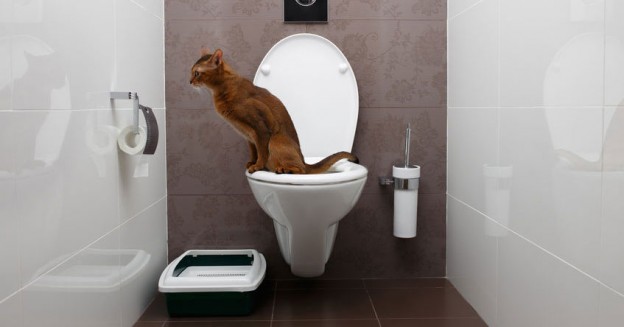Everybody has got their personal theory when it comes to Can You Flush Cat Poo or Litter Down the Toilet?.

Intro
As cat proprietors, it's important to be mindful of how we take care of our feline close friends' waste. While it may appear convenient to purge feline poop down the toilet, this method can have harmful consequences for both the atmosphere and human health.
Alternatives to Flushing
Thankfully, there are safer and a lot more responsible means to take care of feline poop. Take into consideration the complying with alternatives:
1. Scoop and Dispose in Trash
The most usual technique of disposing of feline poop is to scoop it into a naturally degradable bag and toss it in the trash. Be sure to utilize a committed trash inside story and deal with the waste immediately.
2. Use Biodegradable Litter
Choose eco-friendly cat trash made from products such as corn or wheat. These litters are eco-friendly and can be safely taken care of in the trash.
3. Hide in the Yard
If you have a backyard, consider hiding pet cat waste in a designated area far from veggie gardens and water resources. Make sure to dig deep adequate to prevent contamination of groundwater.
4. Set Up a Pet Waste Disposal System
Buy a pet waste disposal system particularly made for cat waste. These systems utilize enzymes to break down the waste, lowering odor and environmental effect.
Wellness Risks
In addition to environmental worries, purging cat waste can also position wellness threats to humans. Cat feces might have Toxoplasma gondii, a parasite that can cause toxoplasmosis-- a potentially serious health problem, specifically for expectant females and people with weakened immune systems.
Environmental Impact
Purging pet cat poop introduces dangerous pathogens and parasites into the water, posturing a substantial risk to water environments. These contaminants can negatively influence marine life and concession water quality.
Verdict
Accountable pet dog ownership prolongs beyond supplying food and sanctuary-- it likewise includes appropriate waste administration. By refraining from purging pet cat poop down the commode and going with different disposal techniques, we can lessen our environmental footprint and safeguard human health.
Why Can’t I Flush Cat Poop?
It Spreads a Parasite
Cats are frequently infected with a parasite called toxoplasma gondii. The parasite causes an infection called toxoplasmosis. It is usually harmless to cats. The parasite only uses cat poop as a host for its eggs. Otherwise, the cat’s immune system usually keeps the infection at low enough levels to maintain its own health. But it does not stop the develop of eggs. These eggs are tiny and surprisingly tough. They may survive for a year before they begin to grow. But that’s the problem.
Our wastewater system is not designed to deal with toxoplasmosis eggs. Instead, most eggs will flush from your toilet into sewers and wastewater management plants. After the sewage is treated for many other harmful things in it, it is typically released into local rivers, lakes, or oceans. Here, the toxoplasmosis eggs can find new hosts, including starfish, crabs, otters, and many other wildlife. For many, this is a significant risk to their health. Toxoplasmosis can also end up infecting water sources that are important for agriculture, which means our deer, pigs, and sheep can get infected too.
Is There Risk to Humans?
There can be a risk to human life from flushing cat poop down the toilet. If you do so, the parasites from your cat’s poop can end up in shellfish, game animals, or livestock. If this meat is then served raw or undercooked, the people who eat it can get sick.
In fact, according to the CDC, 40 million people in the United States are infected with toxoplasma gondii. They get it from exposure to infected seafood, or from some kind of cat poop contamination, like drinking from a stream that is contaminated or touching anything that has come into contact with cat poop. That includes just cleaning a cat litter box.
Most people who get infected with these parasites will not develop any symptoms. However, for pregnant women or for those with compromised immune systems, the parasite can cause severe health problems.
How to Handle Cat Poop
The best way to handle cat poop is actually to clean the box more often. The eggs that the parasite sheds will not become active until one to five days after the cat poops. That means that if you clean daily, you’re much less likely to come into direct contact with infectious eggs.
That said, always dispose of cat poop in the garbage and not down the toilet. Wash your hands before and after you clean the litter box, and bring the bag of poop right outside to your garbage bins.
https://trenchlesssolutionsusa.com/why-cant-i-flush-cat-poop/

As a reader about Can You Flush Cat Poo or Litter Down the Toilet?, I figured sharing that piece of content was essential. Sharing is nice. One never knows, you may be doing someone a favor. I appreciate reading our article about Can You Flush Cat Poo or Litter Down the Toilet?.
Request A Quote
Comments on “Potential Risks of Flushing Cat Poop Down Your Toilet - Advice for Better Disposal”